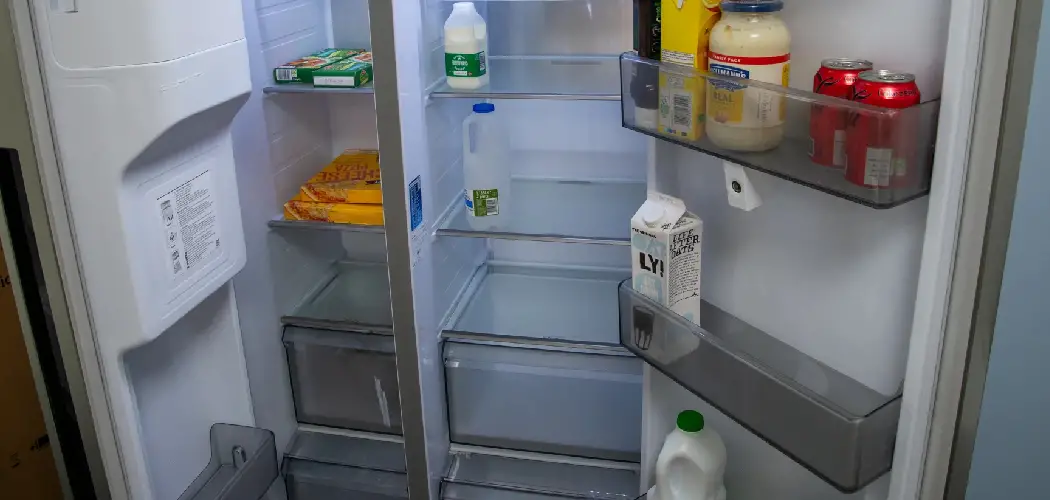Are you tired of constantly having to manually refill your fridge’s water tank? Or perhaps you just want the convenience of a more efficient and direct process for giving it its much-needed H2O.
Well, if so, we have just the guide for you! In this blog post, we will be providing an in-depth look at how to run water lines under floors in order to supply your refrigerator with the necessary hydration – no more manual hand refills required.
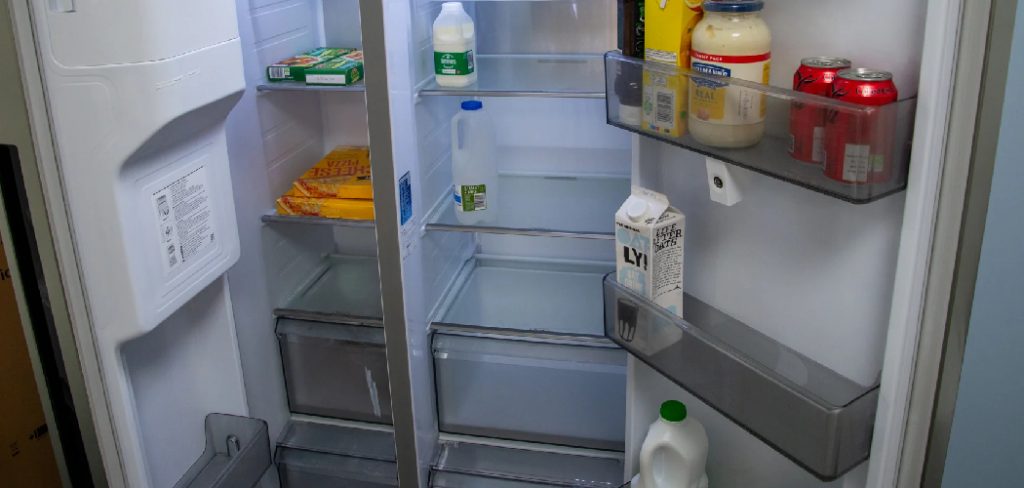
From material selection and proper installation techniques all the way through to ultimate functionality tests, our comprehensive guide can handle any questions or uncertainties that may arise during your DIY project creation process!
By following these step-by-step instructions on how to run water line to fridge under floor anyone can easily install their own water line from their home’s existing plumbing system in no time at all.
Why May You Want to Run Water Line to Fridge Under Floor?
1 . To Save Space
If your kitchen has limited space, running a water line to the fridge under the floor can be a great solution. This will eliminate the need for a bulky and unsightly tubing system visible on your wall or countertop. Also, you will have more free space for other kitchen appliances or decorations.
2 . To Avoid Potential Hazards
Exposed water lines can pose a potential hazard in the kitchen. They can easily get damaged or punctured, causing water leakage and damage to your property. Running the water line under the floor reduces this risk and ensures a safer environment for you and your family.
3 . To Create a Neater and Cleaner Look
Let’s face it, exposed water lines can be an eyesore and disrupt the overall aesthetic of your kitchen. Running the line under the floor creates a cleaner and neater appearance, making your kitchen look more organized and visually appealing.
4 . To Improve Functionality
If you have a large fridge or one that dispenses water and ice, running a water line under the floor can greatly improve its functionality. This will eliminate the need to constantly refill a water reservoir or drag the fridge closer to a sink for filling.
5 . To Increase Property Value
If you are planning to sell your house in the future, adding a water line under the floor for your fridge can be a great selling point. This feature adds convenience and functionality to the kitchen, making it more attractive to potential buyers.
How to Run Water Line to Fridge Under Floor in 5 Easy Steps
Step 1: Gather Your Materials
Before you begin, make sure that you have all the necessary materials for this project. You will need:
- A water supply line kit (which can be purchased at most hardware stores)
- A drill with a 1/2 inch spade bit
- Measuring tape
- Pencil or marker
- Safety glasses
- Gloves (optional)
Step 2: Determine the Best Route
Before you start drilling into your flooring, take some time to plan out the best route for your water line. This will depend on where your fridge is located and if there are any obstacles in the way. Keep in mind that you will need to drill through both the floor and the subfloor.
Step 3: Drill Holes
Once you have determined the best route, use your drill and spade bit to carefully drill a hole through the floor and subfloor at the appropriate location. Make sure to wear safety glasses while drilling.
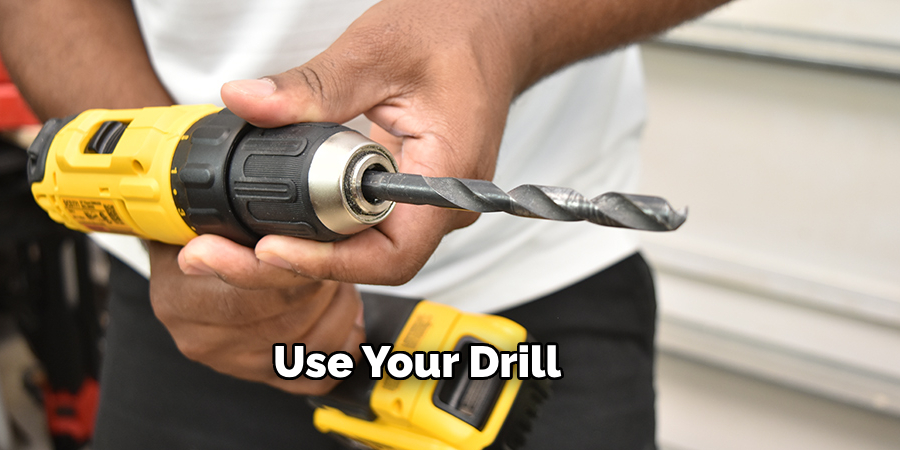
Step 4: Install Water Line
Follow the instructions on your water supply line kit to properly install the line. This will typically involve attaching one end to your fridge and the other end to the water supply in your kitchen. Make sure to secure all connections tightly.
Step 5: Test for Leaks
Once everything is installed, turn on the water supply and check for any leaks. If you do find a leak, tighten the connection or replace any faulty parts. Also, make sure to properly insulate the water line to prevent any freezing or damage.
Additional Tips for Running a Water Line Under Your Floor
1 . Do Not Use PVC Pipes
Before embarking on the task of running a water line under your floor, it is important to know what materials to avoid. One common mistake people make is using PVC pipes for this purpose. This is not recommended as PVC pipes can easily bend or break under pressure and are not suitable for carrying water supply. It is also not approved by most building codes, so it is best to use materials specifically designed for water supply lines.
2. Use Copper or PEX Pipes
The most commonly used and recommended materials for running a water line under your floor are copper and PEX (cross-linked polyethylene) pipes. These materials are more durable, flexible and have the necessary strength to withstand water pressure. They are also approved by building codes and are easy to work with, making them the ideal choice for this task.
3. Plan Your Route
Before starting any installation work, it is important to plan out the route of your water line carefully. This will help you avoid obstacles such as electrical wires or other plumbing lines, and ensure a more efficient installation process. It is also important to consider the length of the water line and how it will be connected to your fridge.

4. Test for Leaks
Once your water line is installed, it is crucial to test for leaks before connecting it to your fridge. This can be done by turning on the main water supply and checking all connections for any signs of leakage. It is also recommended to periodically check for leaks after the fridge is connected, especially if you live in an area with hard water that can cause mineral build-up and damage to your pipes over time.
5. Insulate the Pipes
To prevent any potential freezing or bursting of the water line during colder months, it is important to insulate the pipes before covering them under the floor. This will help maintain a consistent temperature and protect the pipes from any external factors that could cause damage.
6. Consider Hiring a Professional
If you are not confident in your plumbing skills or do not have the necessary tools, it is always best to hire a professional to install a water line under your floor. This will ensure proper installation and minimize the risk of future issues such as leaks or water damage.
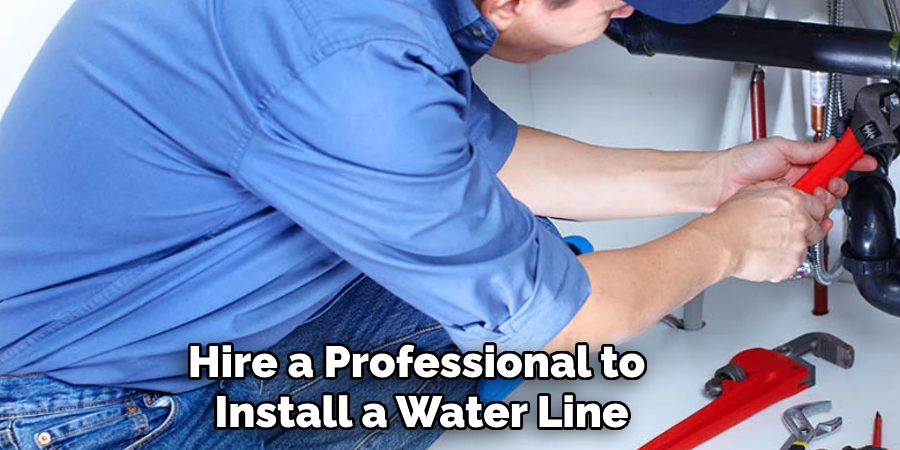
Frequently Asked Questions
What Precautions Should I Take Before Running a Water Line to My Fridge Under the Floor?
- Make sure to wear protective gear and follow safety guidelines when working with tools or cutting through flooring.
- Locate the water line source and turn off the main water supply before beginning any work.
- Check for any potential obstructions such as electrical wiring or pipes that may interfere with your planned route for the water line.
- Measure and plan carefully to ensure that the water line is long enough to reach your fridge with some extra length for movement or adjustments.
- Double-check any building codes or regulations in your area regarding running water lines under floors.
How Do I Find the Best Route for Running a Water Line Under My Floor?
- Take into consideration factors such as distance, obstacles, and accessibility when planning the route for your water line.
- Avoid running the water line under areas with heavy foot traffic to prevent potential damage or leaks.
- Consider using a stud finder or examining blueprints of your home to identify possible routes that avoid any electrical wiring or plumbing lines.
What Tools Do I Need to Run a Water Line Under My Floor?
- Depending on the type of flooring in your home, you may need a variety of tools including a drill with hole saws or spade bits, pliers, pipe cutters, and tubing cutter.
- Consider using a fish tape or string to help guide the water line through tight spaces under the floor.
Can I Run a Water Line Under My Floor by Myself?
- While it is possible to run a water line under your floor by yourself, it may be best to consult a professional plumber for more complex installations or if you are unsure of the process.
- If you do choose to complete the task yourself, make sure to carefully follow instructions and take necessary precautions to ensure safety and minimize potential damage.
Are There Any Alternatives to Running a Water Line Under My Floor?
- If running a water line under your floor is not feasible or desirable, there are alternative options such as using a saddle valve to connect the fridge’s water supply directly to an existing water line.
- Another option is to use a gravity-fed system that utilizes a water jug or container placed above the fridge to supply water. However, this may require more frequent refilling and maintenance.
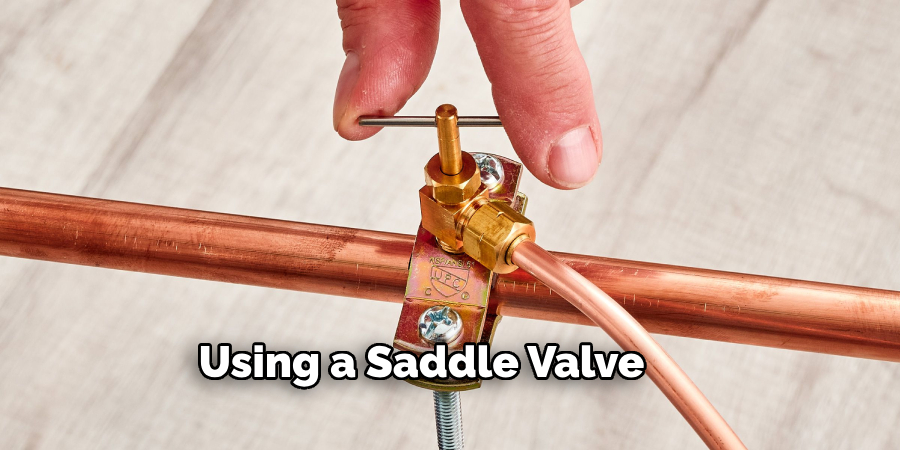
Conclusion
Ultimately, running a water line to the fridge under the floor is a task that comes with its own set of challenges, but once completed can provide numerous benefits. There are a few things to keep in mind when attempting this project, such as the importance of using proper fittings and ensuring you have achieved an adequate seal.
Now you know how to run water line to fridge under floor! When done properly, the process should be relatively straightforward and you’ll soon be able to enjoy fresh-tasting filtered cold water from your refrigerator whenever you please!
With these steps in mind and a little bit of patience, anyone can confidently tackle this DIY project. So what are you waiting for? Take control of your home plumbing system today and never feel thirsty again!

